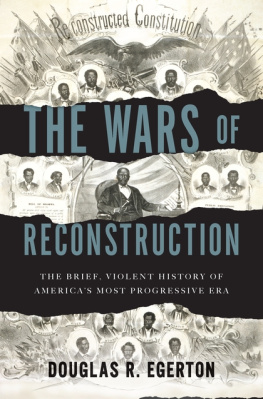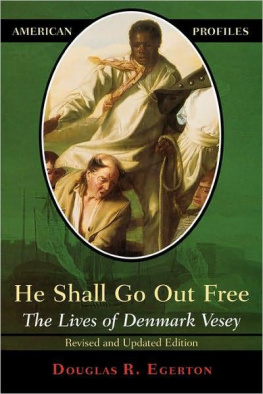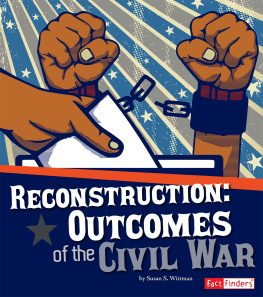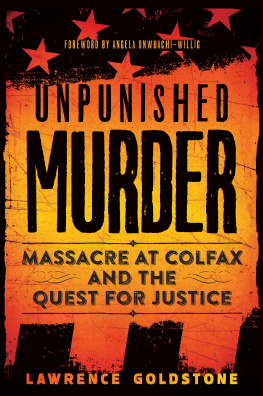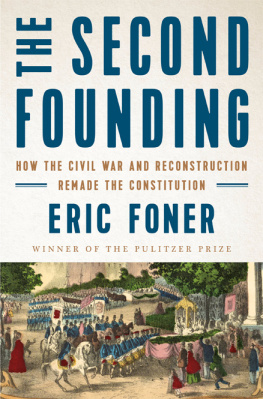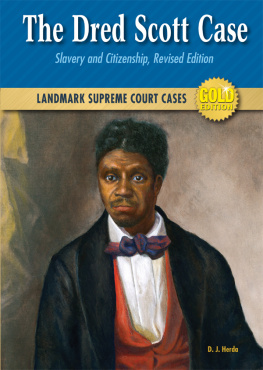

For Leigh
Contents
A city of ruins, of desolation, of vacant houses, of widowed women, of rotting wharves, of deserted warehouses, of acres of pitiful and voiceful barrenness was how one visitor described Charleston at the close of the Civil War. But in view of the fact that the fighting had begun there, when shore batteries opened fire on Fort Sumter at four thirty A.M. on April 12, 1861, the president thought the bloody conflict should conclude there as well. Abraham Lincoln wished to stage a symbolic pageant of liberty in the state that had been home to roughly four hundred thousand enslaved Americans and in what remained a predominantly black city. In late March 1865, Secretary of War Edwin M. Stanton cabled the president regarding suitable military arrangements for the occasion. Stanton suggested inviting abolitionists Wendell Phillips and Henry Ward Beecher. Stanton also thought it appropriate to have nowmajor general Robert Anderson unfurl over Fort Sumter the same banner he had been forced to lower exactly four years earlier. Lincoln agreed and encouraged Stanton also to invite William Lloyd Garrison, the editor of Bostons uncompromising antislavery newspaper, The Liberator ; Lieutenant George Thompson Garrison was furloughed so that he might join his father in their first-ever trip to Charleston. Because the War Department wished to include black activists and soldiers, Major Martin R. Delany, the Virginia-born freeman who was the armys first African American field officer, was invited, as was Lieutenant Robert Smalls, the former Carolina slave and ships pilot who had sailed a stolen Confederate transport craft, the Planter , out of Charleston Harbor. Then somebody remembered to invite African American carpenter Robert Vesey Sr., the son of black abolitionist Denmark Vesey, who had been hanged by city authorities in the summer of 1822.
The city had been captured just one month earlier, on February 18. Fittingly, the first soldiers into the city were black troops, who filed into what had been the bastion of secession and proslavery militancy singing John Browns truth goes marching on. Anxious white residents remained indoors, but Charlestons blacks poured into Meeting and King streets to greet their liberators. One elderly woman threw down her crutch, joyfully shouting that she no longer needed it because the day of jubilee had arrived at last. Major Delany promptly set about filling his depleted ranks with former bondmen, telling potential recruits that as Confederate president Jefferson Davis still remained in control of Richmond, a freedman could yet vindicate his manhood by becoming a soldier, and with his own stout arm battle for the emancipation of his race. So many young men stepped forward, one journalist marveled, that the recruiting officers in Charleston are head over heels in business. Enough black Charlestonians flock[ed] to the United States flag that Delany was able to restructure his battered 103rd and 104th regiments and start organization of the 105th Regiment of United States Colored Troops (USCT).
On March 29, black Charlestonians took to the streets again in the largest parade the city had seen since, ironically, the 1850 death of proslavery politician John C. Calhoun. Journalists placed the number of marchers at above four thousand, while another ten thousand spectators cheered them on. Soldiers from the Twenty-first Regiment of USCT led the way, followed by black artisans and tradesmenone of them presumably Robert Veseywho snaked through the citys streets in a procession of several miles. Observers wept openly as a mule-drawn cart passed by, carrying two women on the way to a mock slave auction and trailed by a slave coffle of sixty chained men. Behind the last came a caisson containing a coffin, draped in black and flying a banner announcing SLAVERY IS DEAD. At that juncture the parade grew festive. A Car of Liberty transporting thirteen girls dressed in white was followed by hundreds of children recently enrolled in schools established by the Freedmens Bureau. Some carried signs emblazoned with THE HEROES OF THE WAR: GRANT, SHERMAN, SHERIDAN while others bore placards that read WE KNOW NO CASTE OR COLOR. As before, few whites ventured out to watch the demonstration of freedom and racial pride, and those who did, thought one reporter, looked surly but had sense enough to keep their thoughts to themselves.
The Fort Sumter rededication ceremony was set for April 14, the anniversary of Andersons capitulation. By then Davis had abandoned Richmond, pledging to return once Lincolns government gave up the impossible task of making slaves of a people resolved to be free. But General Robert E. Lee had surrendered the previous week, and those Carolinians who truly knew what it meant to be enslaved prepared to celebrate the restoration of the stars and stripes atop Sumters massive flagpole. On the night before the event, General John Porter Hatch hosted a grand ball. To drive home the point that the war had brought the nation full circle, Hatch not only chose the same hall where P. G. T. Beauregard had staged his celebratory gala for southern independence four years earlier; he hired the same caterer and ordered the same dishes served.
The next morning dawned clear, the winds soft. As visitors to the city strolled toward the docks, they could not help noticing how forlorn Charleston appeared. A fire in December 1861 had destroyed a number of homes, which had yet to be repaired; one recently liberated slave assured one dignitary that the arsonist was de good Jesus hisself. Finally, at eleven, a small flotilla of ships began their passage to the fort. Among them was the Planter , once again piloted by Lieutenant Smalls but this time ferrying Major Delany and Robert Vesey, and its deck, one newspaper reported, black with the colored population of Charleston. To the north of the harbor, those crowding the rails gazed at Sullivans Island, once the foremost entrept for Africans sold into the southern colonies. To the south, they could see Morris Island and what remained of Fort Wagner, where so many soldiers from the black Fifty-fourth Massachusetts Volunteer Infantry had died. Sumter itself was nearly as shattered. Several years of shelling had reduced three of its five walls to rubble, which desperate Confederate defenders had reshaped into high barriers of debris. The guests scrambled onto a wharf recently constructed on the forts west angle, and a flight of steps led them down to the parade ground. An honor guard of soldiers, white and black, the survivors of the assault on Sumter, formed neat lines on either side of the flagstaff.
In the center of the fort, carpenters had constructed a large, diamond-shaped platform festooned with myrtle, evergreens, and flowers. Above that sat a canopy, draped with American flags and tied back with garlands. Just after noon, Major General Anderson and his daughter stepped to the platform, their arrival the signal for loud and prolonged cheers. After Anderson restored the flag thatas one unforgiving Philadelphia reporter scribbledhe had lowered at the demand of traitors, the speeches began. Beecher delivered a fiery oration that placed blame for the conflict on a wholly unprincipled ruling aristocracy who wanted to keep power. Massachusetts senator Henry Wilson earned the cheers of blacks in the audience by reminding white dignitaries that Carolina slaves had always been loyal to the old flag of the country. African Americans had proved themselves worthy [of] the great situation in which [they] were placed by the Slaveholders Rebellion. They had protected American soldiers, and when possible, had joined their ranks. You know what the old flag means, Wilson shouted, it means liberty to every man and woman in the country.
Next page
